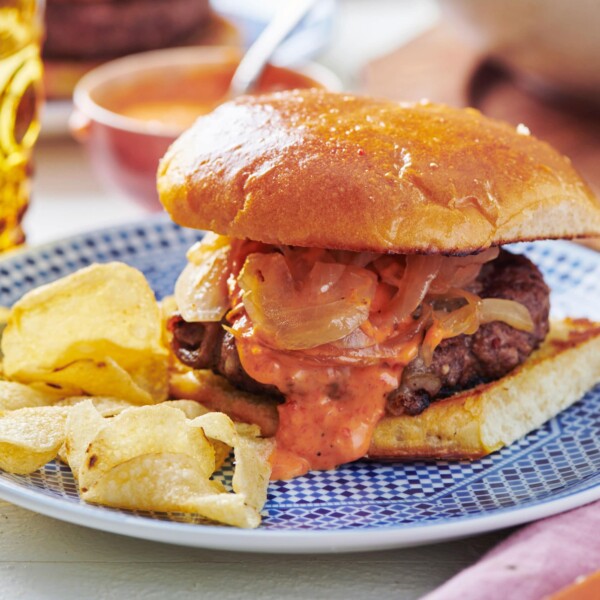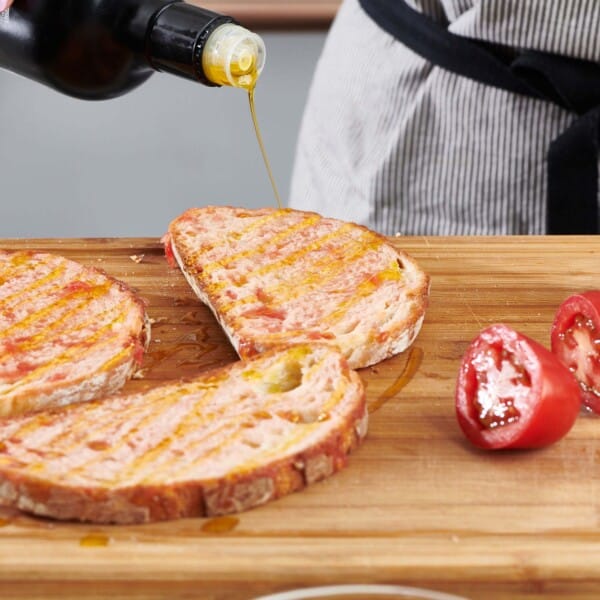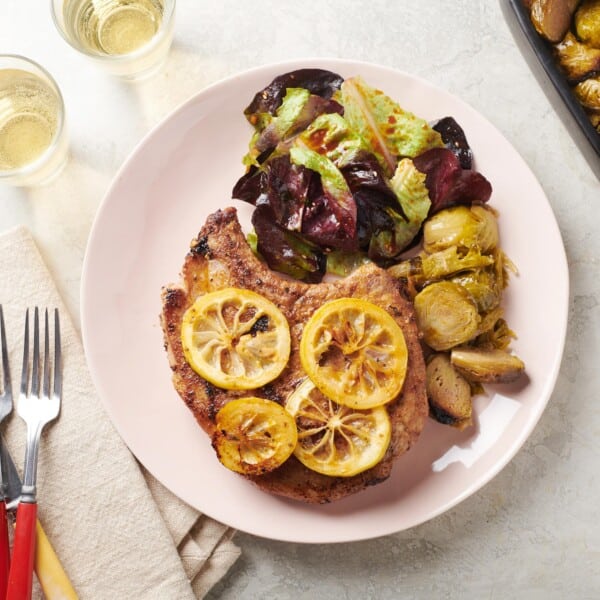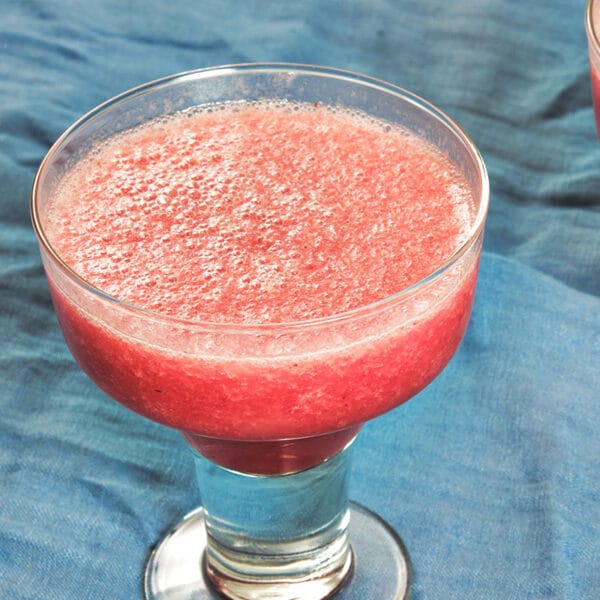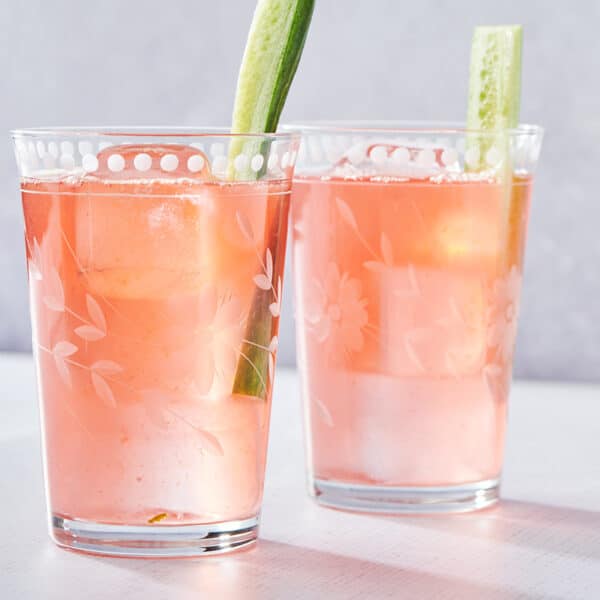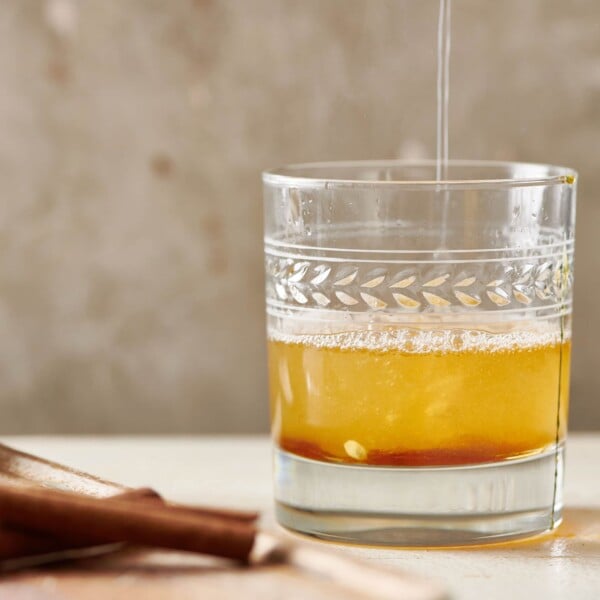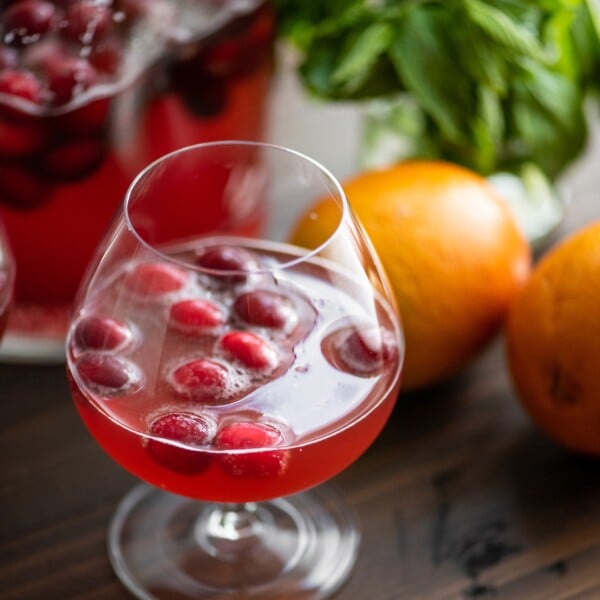Red Sangria
on Nov 18, 2022, Updated May 14, 2025
This post may contain affiliate links. Please read our disclosure policy.
Fruity, fun, not too sweet, with a little effervescence. The perfect version of everyone's favorite pitcher drink!
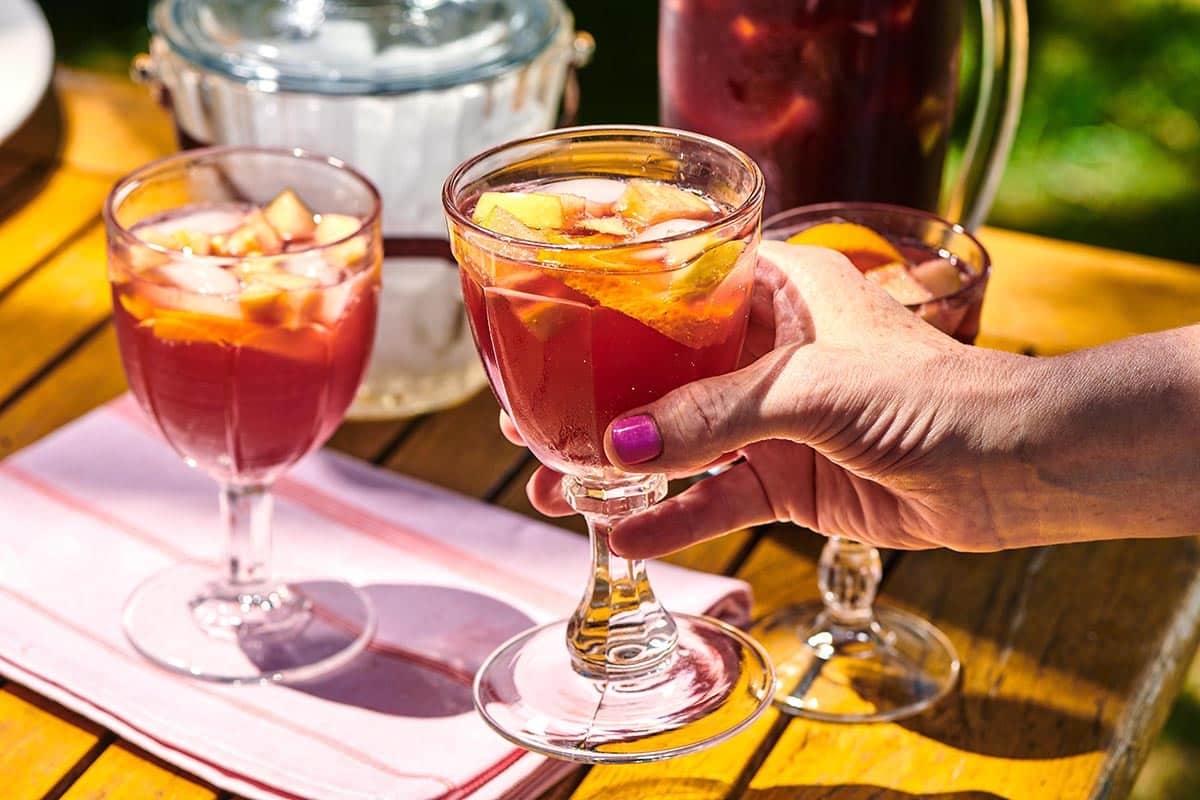
There is no one right way to make sangria. In fact, what is so great about sangria is how flexible this drink is to make. A little more of this, a little less of that, swap fruits in and out, add more sparkling water or more sparkling wine….it will be refreshing and delicious, however you tinker with the recipe. But if I had to make one version of red sangria for the rest of my days, I think this recipe would be it! Fruity, fun, not too sweet, and with just the right amount of effervescence.
Sangria can get such a bad rap, sometimes deservedly so. In some restaurants (and definitely in some pre-made bottled sangria), you can find a drink that is cloyingly sweet and either overly alcoholic or too watered down. Sometimes, you don’t really know where you will land after a couple of glasses (sangria can be sneaky)! A well-balanced fruity and refreshing sangria is yours for the making as long as you keep the ingredients in balance.
By signing up, you agree to our Privacy Policy.
This is a highly drinkable version of the pitcher drink that makes any evening feel like it’s going to turn into a party. It’s just the right amount of boozy, it’s simple to make, and it’s gorgeous. My mom used to make a red wine sangria with chunks of citrus and apples, and I remember being allowed to nibble at the wine soaked fruit on occasion, and thinking, “Oh, I get why this is a thing.” It really is the ultimate fruity summer cocktail!
What's In This Post?
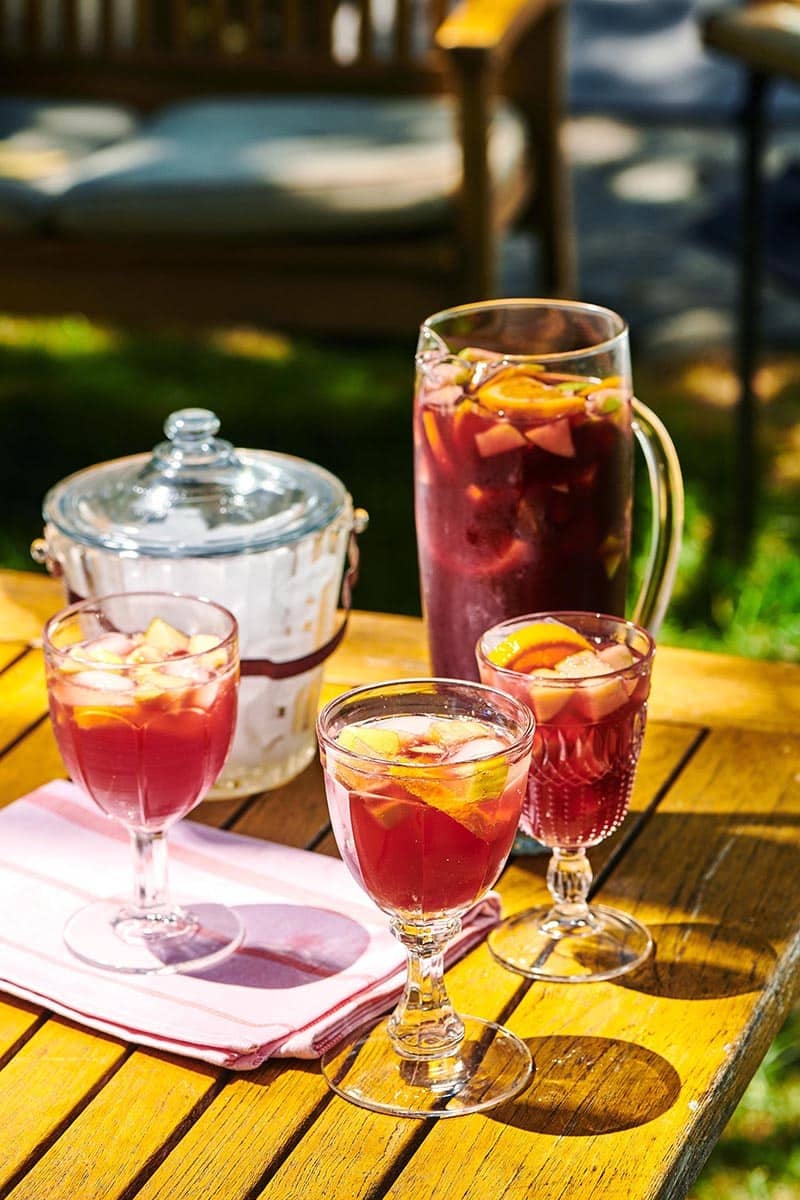
Sangria in Spain
When we visited Spain, we were told sangria is more popular with tourists than locals. Many Spaniards drink tinto de verano instead, which is nothing more than red wine mixed with a lemon-lime soda (usually Fanta). That’s it. And while it may sound kind of sacrilegious to mix wine with soda, I assure you it really works!
It is, in fact, a streamlined back-to-basics version of sangria: a mix of wine and something fruity and sparkling. It’s a little bubbly, a little winey, a little sweet, and altogether refreshing.
However, sangria rocks, and I can withstand the smirk of some Spaniards who think it’s amateur hour, a tourist drink. It did, in fact, originate in Spain and Portugal, and when it’s made well, it’s singularly delicious and refreshing.
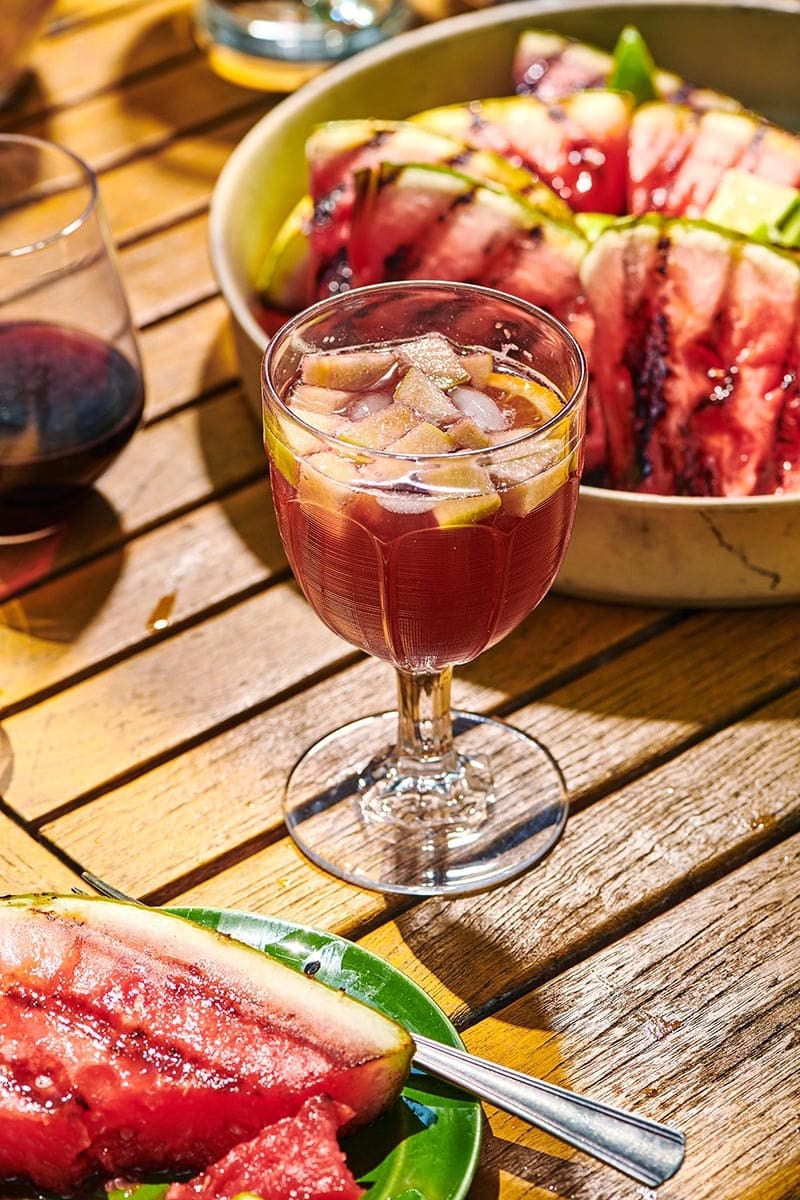
What Is Sangria?
Sangria is an alcoholic drink usually made with red wine, or vino tinto, that is extremely popular in Spain. It is believed to have originated in the Andalusian region in the 19th century. The wine is combined with chopped fresh fruit, a glug or two of hard liqueur, some sugar or simple syrup, and usually, a carbonated drink, whether more wine or water.
Sangria is the national drink of Spain. It’s often enjoyed during the summer months, on its own, sometimes with a meal, often outdoors.
The type of fruit used is very much up to preference. See below for suggestions for popular fruits in sangria, but know that it is a matter of taste. For instance, I read that one wine shop owner in Spain doesn’t use lemons or limes in his sangria because he doesn’t want to have to balance out the acidity with added sweetener, which the tartness of the citrus would necessitate.
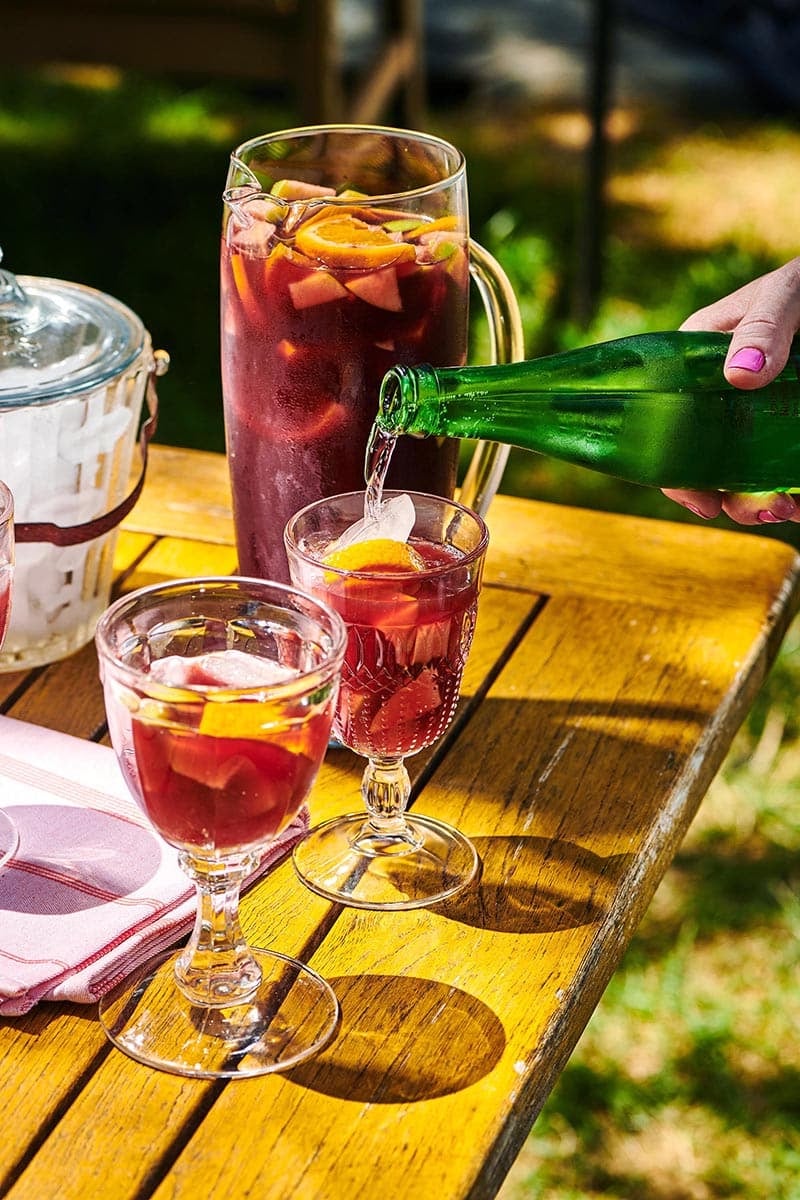
Types of Sangria
Most sangrias are made with wine, either red (the most popular), white, or rosé. Occasionally, the wine itself is sparkling, but more often than not, the fizz comes from sparkling water or club soda. And many sangrias have no bubbles at all but are refreshing in their own right. And then, there are all kinds of possible variations of fruit and added liqueurs.
Once you get the hang of sangria, playing around with different versions is quite freeing. Here’s how I think of it: you can keep adding things until you get to where you want to be. So, if it’s not sweet enough, add more sweetener. If it’s too boozy, add more sparkling water or soda or fruit juice. If it’s too sweet, add some tartness or a little more booze. There are no wrong answers in sangria.
Best Red Wine for Sangria
The most classic version of sangria is made with red wine, and which one you choose is important. Some people advocate for a fruity wine, and some for a dry wine. Again, in the end, it’s a matter of taste and also about how you balance the ingredients and flavors.
Make sure it is a wine you’d like to drink on its own, but don’t spend a lot of money on it. Sometimes, sangria makers fall under the illusion that all of the add-ins to the drink will mask a lower-quality wine. But, nope, that won’t be the case, so make sure you like the wine to begin with! Lambrusco (a fizzy red wine meant to be served chilled), Tempranillo, Rioja, San Giovese, Pinot Noir, or Grenache are all good choices.
The Best Liqueurs or Liquors for Sangria
- Triple sec is a traditional addition to sangria. Its orange base gives the sangria a citrus flavor, but other orange-flavored liquors can also be used.
- Licor 43 is another common Spanish liquor added to sangria, though a little goes a long way. This liqueur will impart a vanilla flavor, which you want to keep quite subtle.
- Clear brandy is also often added in addition to the more flavorful liqueurs, but this really has the sole purpose of making the drink more potent. Add judiciously! Brandy de Jerez is a type of Spanish brandy most often used in sangria.
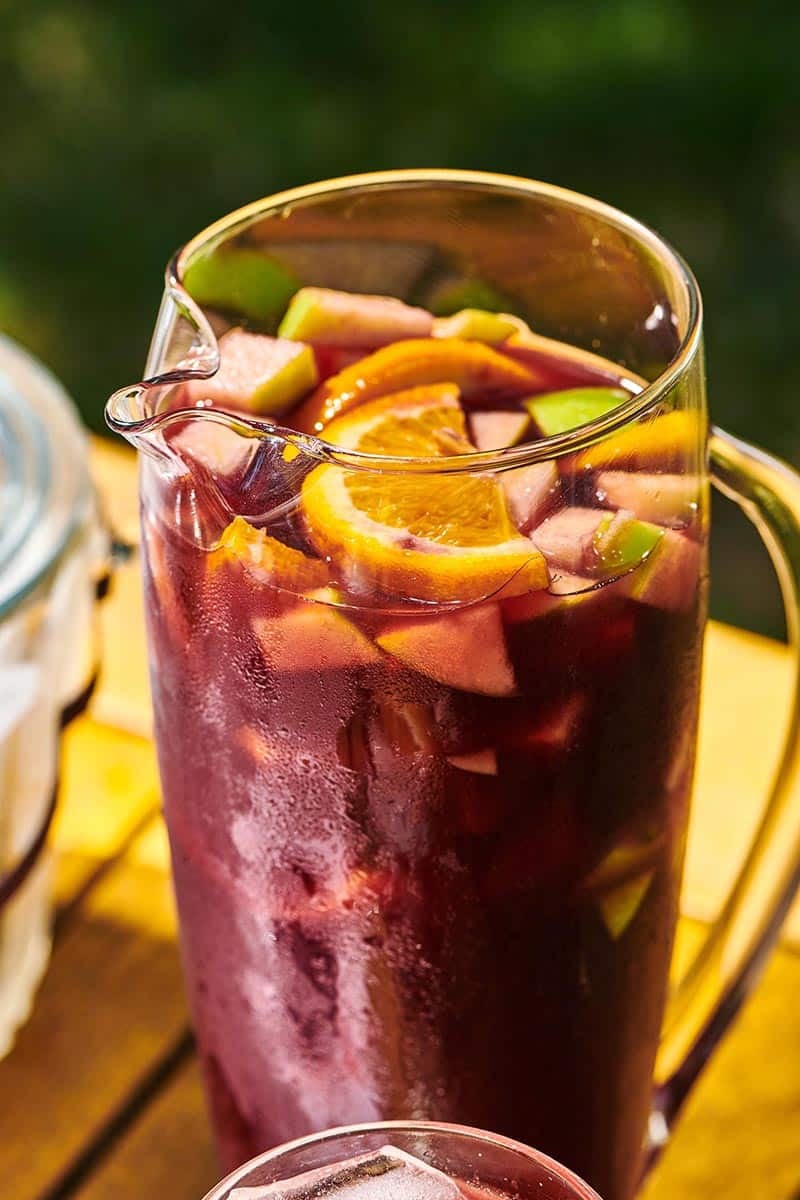
Red Sangria Ingredients
- Liqueur – Another liqueur besides wine is usually added to the sangria. This is where you need to decide if you want your drink to be a little more alcohol-driven or a little lighter on the booze. I usually use a combo of a little orange-flavored liquor and a little clear brandy.
- Fruit – There are tons of choices here! Some of the most popular fruits are citrus fruits (oranges, lemons, limes, and more), apples (green apples are popular), grapes, berries, peaches, apricots, and pears. You might also add a tropical flare by adding a mango, papaya, pineapple, or starfruit. In addition to cut-up fruit, I also often add a nice amount of fresh orange juice (and please use fresh if you can!).
- Sweetener – Some recipes don’t even call for added sweetener, but most people I know like a little sweetness in their sangria. Using simple syrup — with the sugar already dissolved in the water — allows you to blend the sweetener right into the drink and control the sweetness in a consistent way. Go easy on the sugar or simple syrup; you can always add more.
- Sparkling wine or water – Some people don’t like anything effervescent in their sangria, but most sangrias that are served in the U.S. (as well as many parts of Spain and Portugal!) have some fizziness to them. If you don’t want the water to dilute the drink, skip it. I frankly find the addition of sparkling water helpful in restraining the alcohol level of the drink. You will not want to stop at one glass of this…but you also don’t want to regret it the next day!
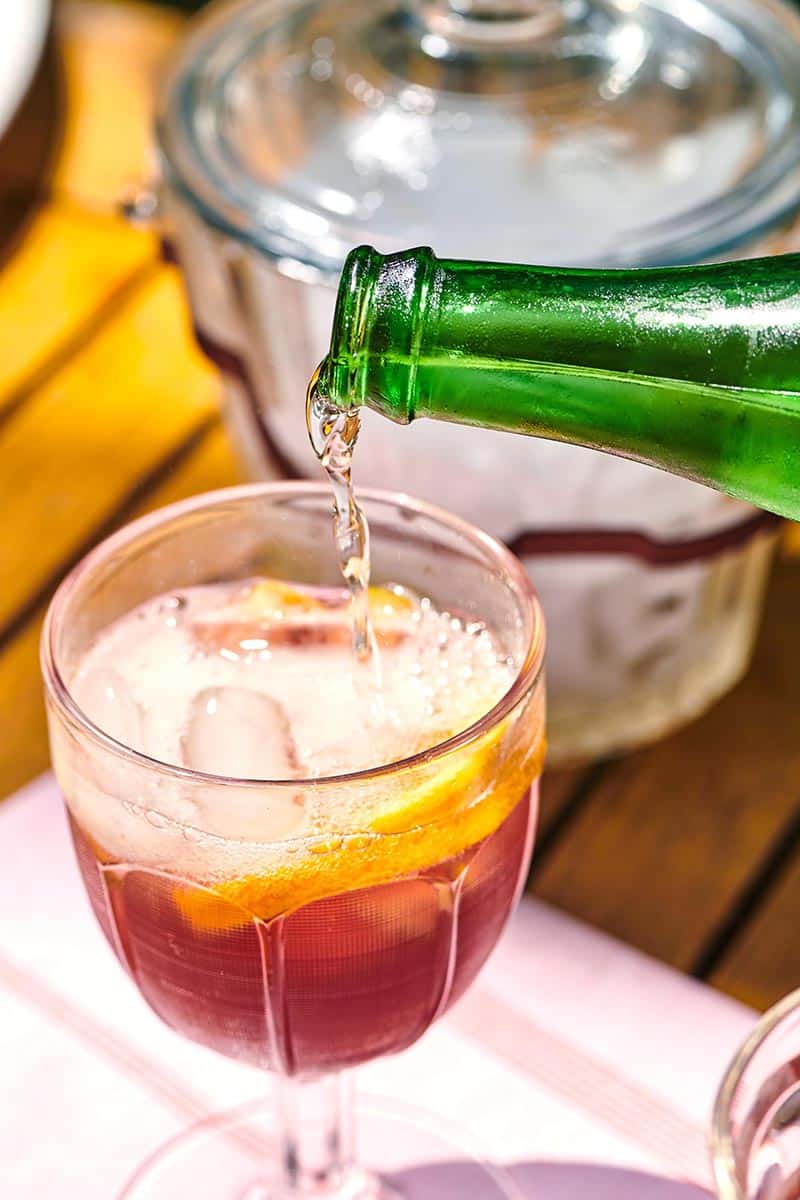
How to Serve Sangria
Sangria is most often made and served by the pitcher, though you can certainly order it by the glass in most restaurants that serve it. The pitcher is usually made out of glass or terra cotta. I always prefer glass when making it at home so I can show off the color of the drink and the fruit! Sangria jugs are designed with a pinched spout to prevent the fruit from tumbling out of the pitcher and splashing everywhere.
There is usually a spoon in the pitcher for stirring the drink to mix it anew before pouring a fresh glass. The spoon is also there so you can scoop out some fruit and add it to the individual glasses.
When ready to serve, you can pour the sparkling water into the pitcher and then pour the sangria into glasses with a couple of ice cubes in each. Or, you can pour the sangria into glasses with ice and then pour some sparkling water into each glass to finish the drink. This allows you to keep the base of the sangria chilled and add cold sparkling water to each serving as you pour it. Keep the sangria chilled and refill glasses as needed.
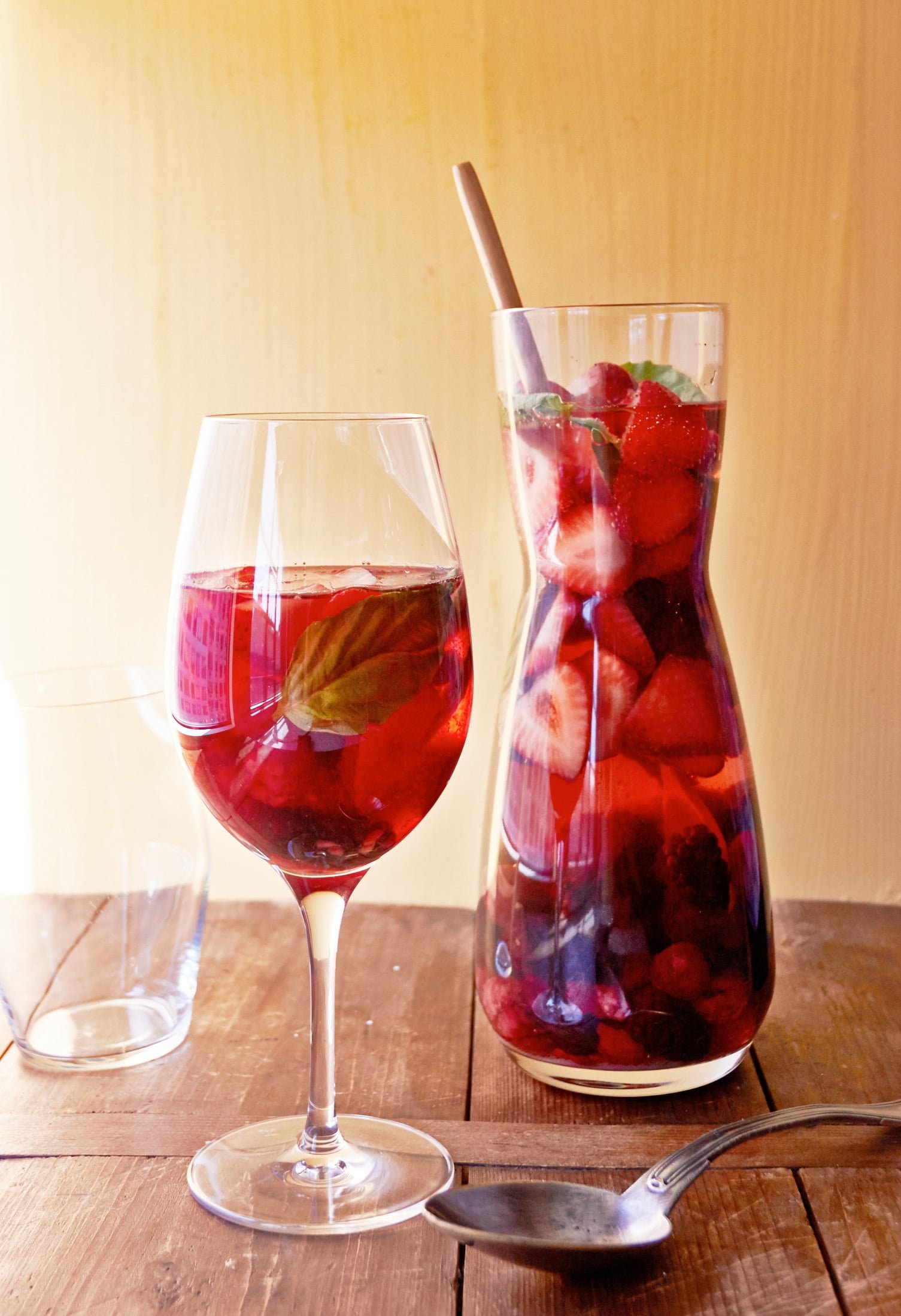
Tips for Making Sangria
- If you have lots of sweet fruits in the sangria, you may need very little added sweetener or simple syrup. You don’t want the sugar to overpower the taste of the wine and the fruit.
- Whether you are using sparkling water, sparkling soda, or sparkling wine, make sure it is chilled. Add it to the pitcher or glass just before serving so the sangria will keep its fizz. Not all sangrias are fizzy, but many have some bubbles.
- Put the ice in the glasses, not in the pitcher. This prevents the sangria in the pitcher from becoming diluted. Just add a couple of cubes to each glass and leave the pitcher chilling in the fridge between refills.
- Keep a long-handled spoon in the pitcher. Then, you can scoop some of the fruit into the glasses as you serve the sangria.
- If you feel like your guests won’t want to pick out the fruit from their glasses with their fingers, provide additional small spoons so everyone can enjoy those boozy pieces of apple and pear! I think the wine-soaked fruit is the best part.
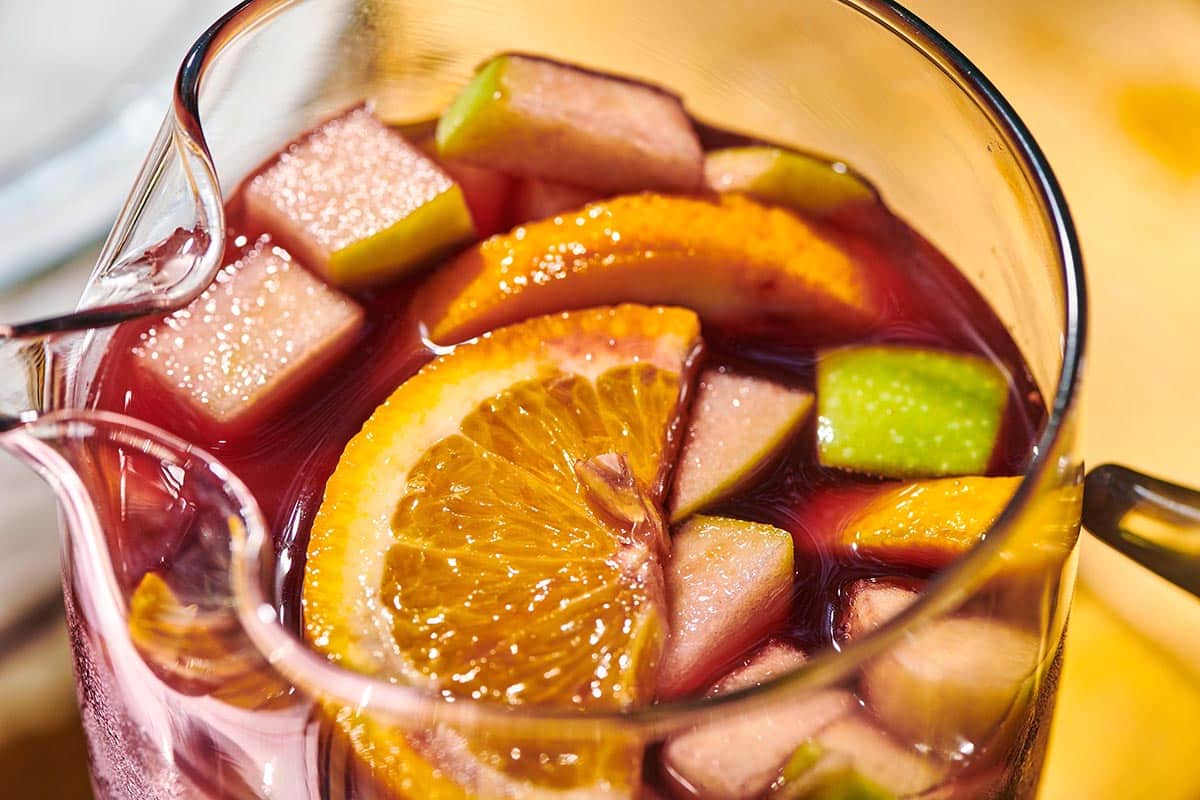
How to Make Red Wine Sangria
- Combine and refrigerate: In a medium pitcher, combine the wine, triple sec, brandy (if using), orange juice, simple syrup or sugar, apples, and oranges. Stir to mix well and chill for 4 to 12 hours to macerate the fruit.
- Serve and enjoy: Pour the sparkling water into the pitcher and then pour the sangria into glasses with a couple of ice cubes in each. See above for other tips on serving sangria!
What to Serve Sangria With
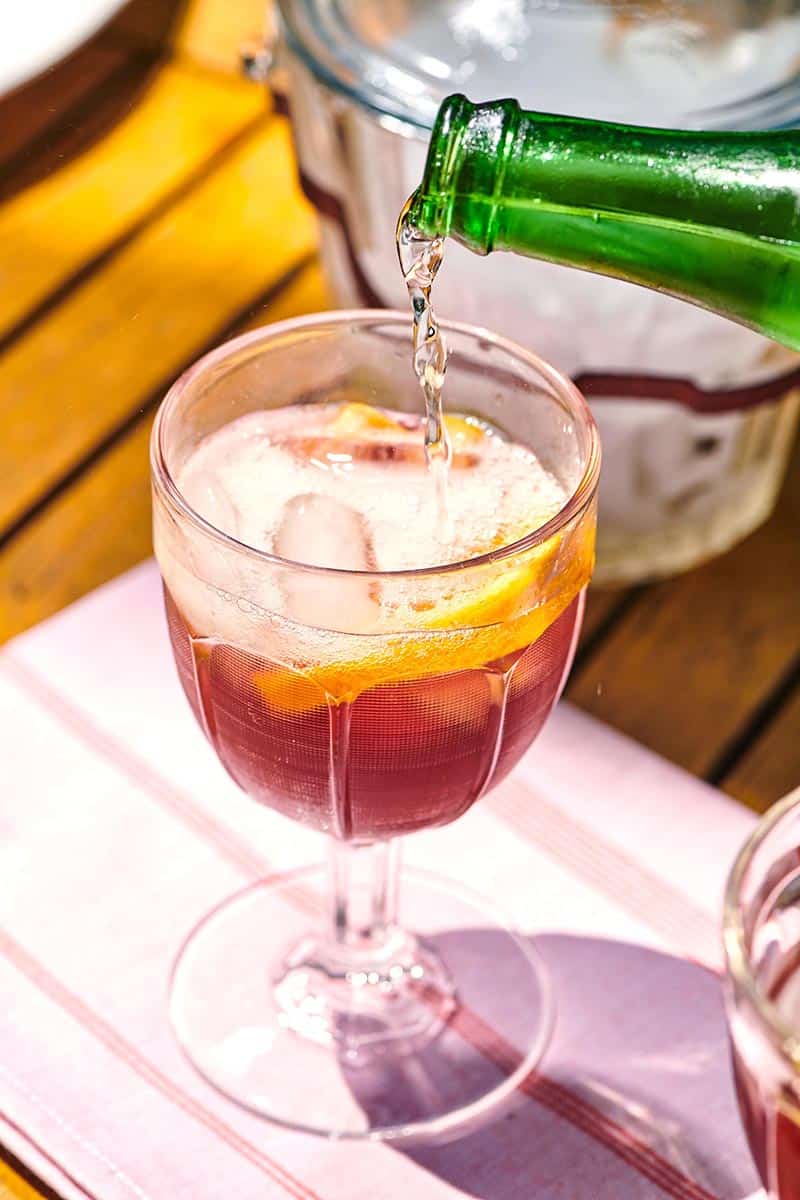
More Cocktail Recipes
Pin this now to find it later
Pin It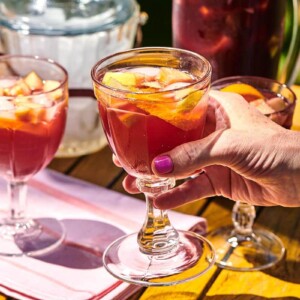
Red Sangria
Ingredients
- 1 (750 ml) bottle dry red wine (preferably Spanish)
- ½ cup triple sec or Cointreau (or other orange liqueur)
- ¼ cup clear brandy (optional; see Note)
- 1 cup fresh orange juice
- 3 to 5 tablespoons simple syrup or superfine sugar
- 1 large green apple (cored, and diced)
- 2 oranges (halved and thinly sliced; with peels)
- 2 cups chilled sparkling water or club soda
- Ice (to serve)
Instructions
- In a medium pitcher, combine the wine, triple sec, brandy (if using), orange juice, simple syrup or sugar, apples, and oranges. Stir to mix well and chill for 4 to 12 hours to macerate the fruit.
- When ready to serve, you can either pour the sparkling water into the pitcher and then pour the sangria into glasses with a couple of cubes of ice in each. Or, you can add ice to some cups, pour the sangria into the glasses, and then pour some sparkling water into each glass to finish the drink. This allows you to keep the base of the sangria chilled, and only add cold sparkling water to each serving as you pour it.
